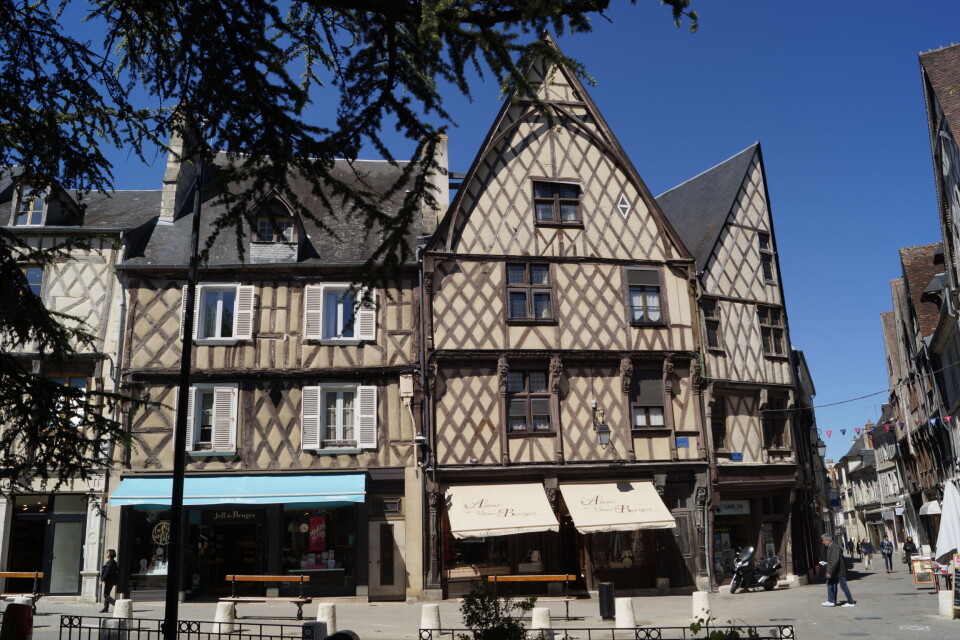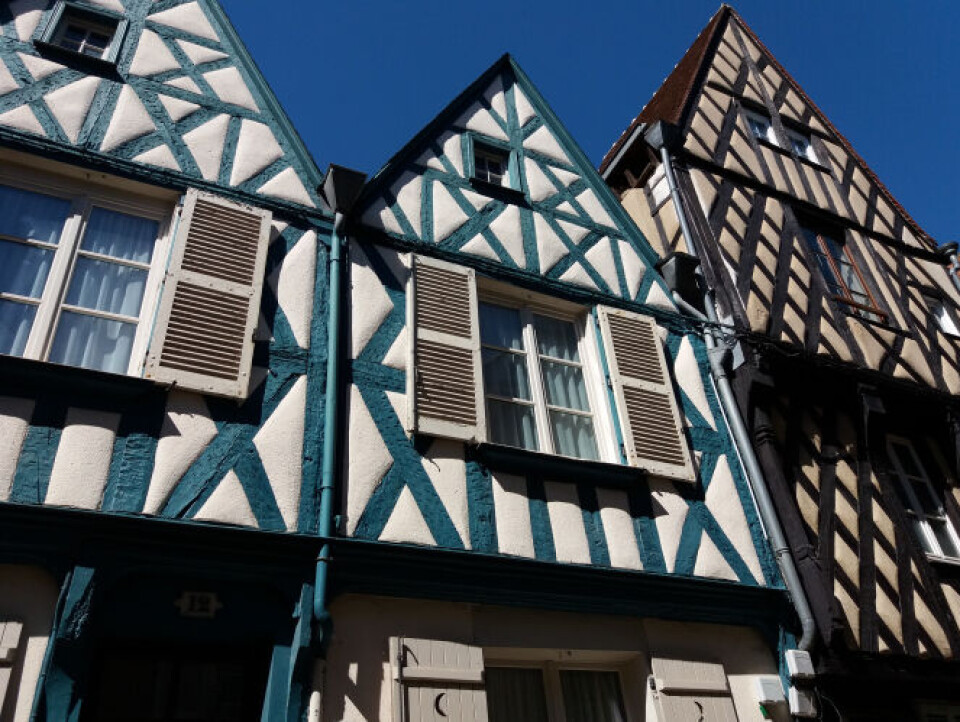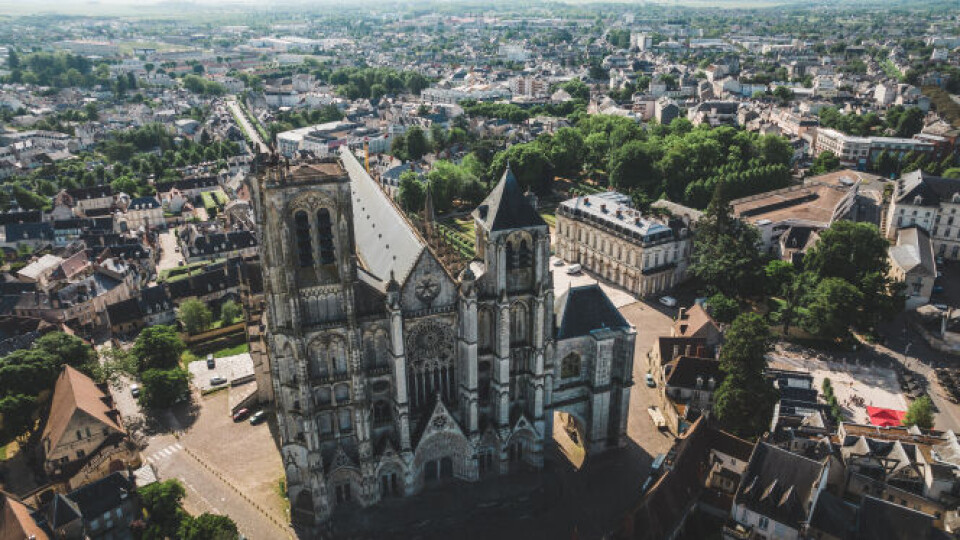-
Easter traditions across France: From rattles and hooded processions to giant omelettes
Regional Pâques celebrations highlight France’s cultural diversity
-
Visit the French village of Vouvant: along cobbled streets and hiking trails
Explore the rich history and artistic allure of this medieval hideaway, nestled in the heart of the Vendée
-
Photos: 94 chateaux open their doors to visitors in Dordogne
The fifth Chateaux en Fête festival offers a chance to look around many impressive properties that are usually private
Centre yourself in the wine-making, historical heart of France
We explore the central department of Cher, where visitors can step back in time in the medieval city of Bourges, mess about in boats, or sample some world-famous wine

Exploring Cher really is diving into the heart of France; not only is it the home of Sancerre, one of France’s most iconic wines, but the history of Bourges goes right back to pre-Roman times in a neat historical encapsulation of the last couple of thousand years.
The countryside is fertile and rolling, the villages tranquil and pretty; there are chateaux to visit, wines to taste, sports to enjoy and history to learn.
Having so many vineyards and chateaux on the doorstep does pose the slight problem of which one to visit.
All have their attractions. It just depends what you are after; glamour, history, architecture, wine, or a mix of all four.
‘Mystery’ village
Cher also contains the ‘mystery’ village located at the geographic centre of the Hexagon.
It lies south of Bourges, that much is certain, but where exactly is a much more complex matter.
The rivalry for this title (and the tourist dollars that go with it) between the communes of Saint-Amand-Montrond, Farges-Allichamps, Bruère-Allichamps, Vesdun, and Saulzais-le-Potier is intense.
There may even be other pretenders to the crown, but anyone determined to discover the truth is missing the point.
Whichever way it goes, Cher has a huge heart, and exploring it is like listening to the heartbeat of France.
Opportunities to get wet
There are multiple opportunities to get wet in Cher, with rivers, lakes and swimming pools aplenty.
Balnéor in Saint-Amand-Montrond is a nice option.
The outdoor pools are designed as a series of overlapping blue circles, and there is plenty of space to sunbathe, either on the grass or on a sunlounger by the pool.
There is a slide, a plunge pool, two saunas and a hammam as well as paddling pools for tots.
There are massages available, but it is best to book in advance.
If you wander around near Saint-Amand-Montrond, you might notice a huge silver construction looking like a section of Toblerone.
It is the Pyramide des Métiers d’Art, et Centre de Congrès et Spectacles − which used to contain an interesting museum but which is now mainly used as a conference venue.
It is a surreal sight, rising out of traditional farmland.
Film location

Bourges has an extensive historic centre which is so well preserved that it is often used as a film location.
Look carefully for the streets which have no modern shop fronts, no road signs, and no white paint on the cobbles.
They are deliberately maintained that way so that all the council has to do is shift the cars out and the streets are ready for filming.
The Princess of Montpensier was filmed in Bourges, as was Notre-Dame on Fire, released last year.
Influenced by Notre-Dame

The design of the Cathédrale Saint-Étienne de Bourges was heavily influenced by Notre-Dame de Paris, and there are many similarities, including the double towers flanking the main entrance.
As you face them, however, you will quickly see that the right one is much shorter than the left one − because the original fell down and was rebuilt in a grander style.
The right one is heavily buttressed!
It is worth studying the sculptures which adorn the arches.
Inside, the building is quite plain, as sadly much of the original coloured paint has disappeared.
It is noted for its vast uninterrupted space, 13th-century stained glass and astronomical clock.
Eleanor of Aquitaine
Having married Louis VII of France, in 1145, Eleanor of Aquitaine was crowned Queen of France in an earlier cathedral on this site.
Do not miss the statues in the crypt.
There is an especially touching carving of a bear cub, still in its harness and chain, curled up at the feet of Jean, Duc de Berry. (Cher is, of course, part of Berry, which also encompasses Indre.)
If you are thirsty after all that culture, seek out the tiny teashop called Cake Thé (74 bis Rue Bourbonnoux), where locals scoff home-made cakes.
Jacques Coeur’s legacy
Jacques Coeur’s legacy is massive in Bourges − you see his name all over the place.
The son of a rich merchant, he had such a good head for business that he amassed a glittering fortune and even got himself ennobled.
On his way to the pinnacle of success, he constructed a magnificent house in the centre of town, complete with hardwood floors, enormous fireplaces, rich decorations, sculptures, paintings and ornaments, an interior courtyard, and even sculptures of himself and his wife leaning out of the windows on the first floor to survey the street below.

His palace features his motto everywhere: ‘A vaillans cuers riens impossible’ (‘To the valiant heart, nothing is impossible’).
Sadly, he made some powerful enemies on the way up, and perhaps the green-eyed monster also played a part.
In 1451, he was arrested and accused (on no grounds at all) of having poisoned the King’s mistress, and the wolves attacked.
An investigation led by his political enemies accused him of crimes including fraud, paying backhanders to infidels, coining light money, kidnapping oarsmen, and refusing sanctuary to a Christian slave.
He defended himself in vain.
Despite there not being a shred of evidence, he was convicted, and after nearly two years in jail, condemned to do public penance and to pay the king what would now be around a million euros.
His property was confiscated and he was jailed and exiled.
Coeur managed to escape to Rome in 1455, where he was well received, and became captain of a fleet of ships sent to the relief of Rhodes.
He set out on this expedition but fell ill and died in Chios. His male descendents eventually recuperated some of his vast wealth, but his palace remained the property of the State.
In a way it was lucky, because it was therefore spared being damaged during the Revolution.
And if you are wondering what happened to his wife, Macée de Léodepart, she died in 1453, while her husband was in prison, and is buried in the church opposite her former home.
If you are keen to discover more history in Bourges, you will need to be patient, since the powers-that-be have taken the bold decision to close all the municipal museums for probably the next decade, in order to revamp the buildings and to re-organise all the collections.
There is a promise on the table to hold regular exhibitions, but the museums themselves will be closed for the foreseeable future.
World famous syrups
Smaller, privately owned establishments remain open, however, and the Villa de Monin is one of them.
Monin is world-famous for its syrups.
The range of flavours is extraordinary: sage, cucumber, watermelon, chocolate, pumpkin spice, and more.
Some are designed to be diluted with hot/cold/fizzy water, others as ingredients to be added to coffee, hot chocolate or cocktails.
The shop is very generous with free tastings, there is a tiny museum showing where some ingredients are farmed, and a cosy cocktail bar where you can continue your mixology education.
The shop also sells yummy Daniel Mercier chocolates.
Foodie trail
On the foodie trail in Cher, it is also possible to visit the shop at the Rians Dairy, which is just outside Bourges.
Summer evenings in Bourges are delightful.
During the high season, much of the historic centre is beautifully illuminated and decorated with light projections, and a path is marked out in blue lights, which you can follow to see all the highlights, if you’ll pardon the pun.
The Tourist Office has more information about Les Nuits Lumière Bourges.
If you feel like treating yourself to a decent restaurant, I recommend booking a table at Les Petits Plats du Bourbon, just outside the historic centre.
The building and the decor are amazing, the service impeccable, and the cuisine is inventive without being over the top.
Outdoor spaces competing for your attention include the Parc Floral d’Apremont with its spectacular flower displays, the Jardin de l’Archevêché behind the cathedral, and the Marais, which has the added benefit of allowing you to admire the scenery from a flat-bottomed boat.
Again, find details at the Tourist Office.
While exploring Cher, do not neglect the Pôle des Etoiles at Nancay.
Explore the universe
It is a real scientific centre explaining the sky and the universe. It has a planetarium, an observatory and an exhibition space. Using virtual reality you can experience landing on Mars.
It regularly holds workshops for children and star-gazing sessions for adults.
For a more down-to-earth experience, the Musée de Vierzon is fascinating.
Housed in a former factory, the collections trace the town’s industrial history through the 19th and 20th centuries via the people who made porcelain, glassware, china and agricultural machinery.
Using drawings and scale models as exhibits, it also traces the history of the railways in France.
Another incredible engineering feat can be admired at Cuffy, where the Pont Canal Du Guetin means that canal boats can actually cross the Loire river as if on a bridge.
Circus
Vierzon is also home to the Cabaret Cirque National Palace, which is a dinner theatre.
The idea is that you go for dinner and a spectacular show, but in fact it is possible to go and just enjoy the show on a Sunday.
It is very much the same idea as the famous revues in Paris, but for less money and with a less tacky vibe.
If you are ready for some sequins and sparkle, this is for you. In Vierzon, it is hard to miss the ultra-modern foyer which has been constructed in front of the old La Poste building.
Digital art
The Espace Maurice Rollinat is a digital art museum with loads of fun activities for all the family.
There is even a virtual reality zone.
The exhibition space is for contemporary art and the accent is on accessibility.
Another enjoyable visit is the Maison Ecole du Grand Meaulnes in Epineuil-le-Fleuriel.
The building houses a school, a house and a mairie, and together they create an authentic time warp back to 1900, from the wooden clogs to the crisp white sheets and the smell of ink in the air.
There are guided visits, plus a shop selling local products, and special events include being able to sign up for French dictation using a dip pen.
Keep an eye on their website for dates.
Related articles
French legends part five: Kings and magic – stories from the centre
Expert advice on collecting and ageing French wine
MAP: France’s most welcoming towns and villages
























